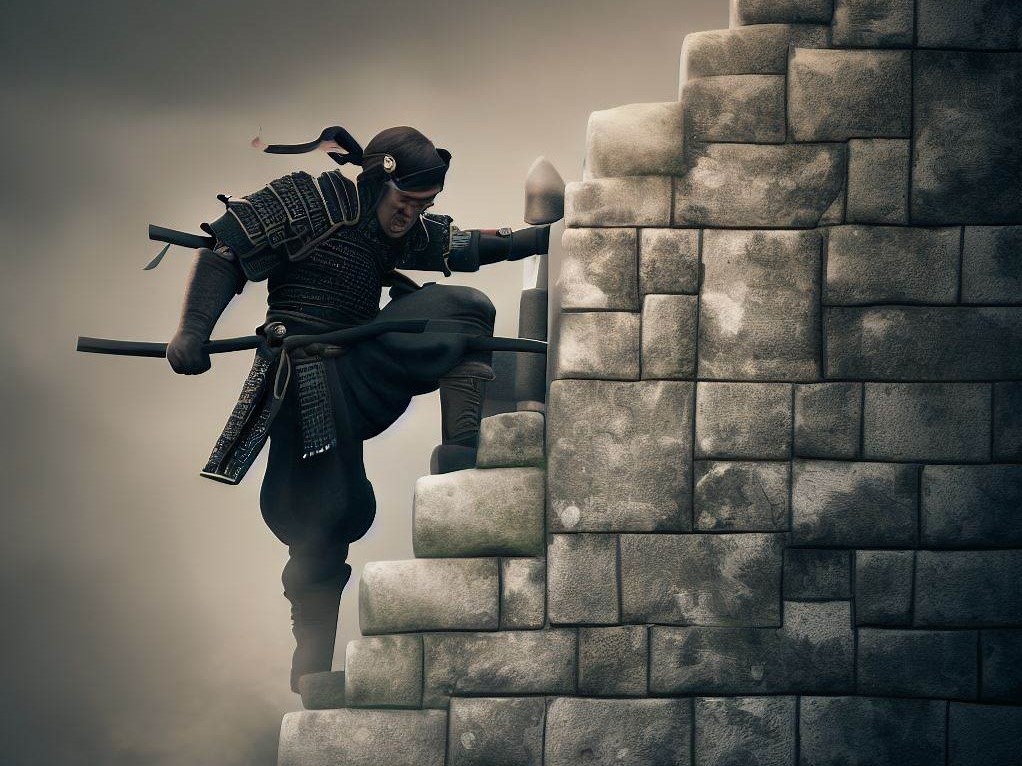Ninja, also known as shinobi, were covert agents or mercenaries in feudal Japan who specialized in espionage, sabotage, infiltration, assassination and guerrilla warfare. They were often hired by daimyo (feudal lords) or shogun (military dictators) to carry out missions that required stealth, speed and skill. Ninja were trained in various martial arts, weapons, disguise, stealth, survival and other techniques. They also developed a culture and philosophy of their own, based on loyalty, secrecy and pragmatism.
However, many myths and legends have surrounded the ninja over time, exaggerating their abilities and creating a distorted image of them in popular culture. For example, some people believe that ninja could fly, walk on water, disappear in a puff of smoke or use magic spells. These are mostly based on folklore, fiction or historical accounts that were embellished or misinterpreted. In reality, ninja were human beings who used their skills and tools to achieve their goals, often relying on deception, surprise and intelligence rather than supernatural powers.
The Real Ninja
The truth about Japanese ninja is that they were not a uniform group of warriors, but rather a diverse and adaptable phenomenon that emerged from different historical and social contexts. They were not always loyal to their employers, nor were they always enemies of the samurai (the warrior class). They were not always dressed in black, nor did they always wear masks or hoods. They were not always male, nor did they always belong to a clan or a school. They were not always evil, nor were they always heroic. They were simply ninja: the hidden ones.
One of the possible sources of ninja is the yamabushi, or mountain ascetics, who practiced a form of esoteric Buddhism and martial arts in the remote regions of Japan. Some of these yamabushi became mercenaries and spies, using their knowledge of the terrain and natural phenomena to conceal their movements and activities. Another possible source is the genpei kassen, or the civil war between the Taira and Minamoto clans in the late 12th century. During this conflict, some warriors adopted guerrilla tactics and unconventional methods to gain an advantage over their enemies. These warriors were called shinobi, or those who endure, and they formed the basis of the later ninja clans.
The most famous and influential ninja clans were the Iga and Koga, who developed their own schools of ninjutsu, or the art of stealth. They were renowned for their expertise in disguise, infiltration, weaponry, explosives, poisons, medicine and psychology. They also had a code of ethics and loyalty that governed their conduct and relationships. The Iga and Koga clans were often rivals, but they also cooperated with each other when faced with external threats. They served various warlords and shoguns throughout the history of Japan, until their decline in the 17th century due to the unification and pacification of the country under the Tokugawa shogunate.
One of the most famous historical ninja was Hattori Hanzō, a samurai and a leader of the Iga clan in the 16th century. He served Tokugawa Ieyasu, the founder of the Tokugawa shogunate, and helped him escape from the siege of Osaka Castle in 1582. Hattori Hanzō was known for his skills in espionage, sabotage, infiltration, assassination, and guerrilla warfare. He was also a master of various weapons, such as swords, spears, shuriken, and kusarigama. He earned the nickname “Devil Hanzō” for his cunning and bravery in battle. He is regarded as one of the most legendary ninjas in Japanese history.

Kunoichi
Women played an important role in the ninja. The truth about female ninja in feudal Japan is also often obscured by myths and legends. Female ninja, or kunoichi, were not just seductive spies and assassins, but also skilled warriors and agents of espionage. They played a vital role in the political and military conflicts of their time, serving various lords and clans with loyalty and courage.
Kunoichi were trained in the same arts as male ninja, or shinobi, such as stealth, disguise, infiltration, sabotage, and combat. They also learned skills that were unique to their gender, such as using their hairpins, fans, or umbrellas as weapons, or concealing small blades or poisons in their clothing or accessories. They could use their feminine charms to manipulate or distract their enemies.
Kunoichi were often employed as maids, courtesans, entertainers, or concubines in the households of their targets. They could gather valuable information, spread rumors, influence decisions, or even assassinate their enemies from within. Some kunoichi were also sent as messengers, scouts, or spies in enemy territory, using their disguises and cunning to avoid detection. Some kunoichi even led their own bands of ninja, commanding respect and fear from their allies and foes alike.
The history of kunoichi is shrouded in mystery and secrecy, as most of their deeds and identities were never recorded or revealed. However, some kunoichi have become famous for their exploits and achievements, such as Mochizuki Chiyome, who created a network of female spies for Takeda Shingen; Hattori Hanzo’s daughter, who helped Tokugawa Ieyasu escape from the siege of Osaka; or Lady Chacha, who fought alongside her husband Toyotomi Hideyori against the Tokugawa forces. These kunoichi demonstrate the diversity and complexity of female ninja in feudal Japan, who were not just passive or submissive agents, but active and powerful actors in their own right.
In Part 2 of the article, we cover the Hollywood ninja myth and modern day ninjutsu,

